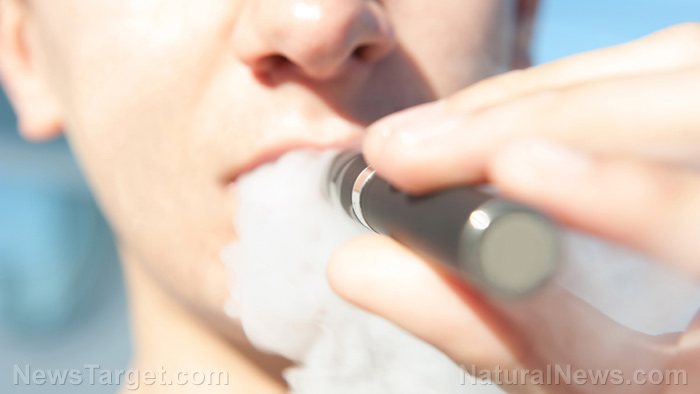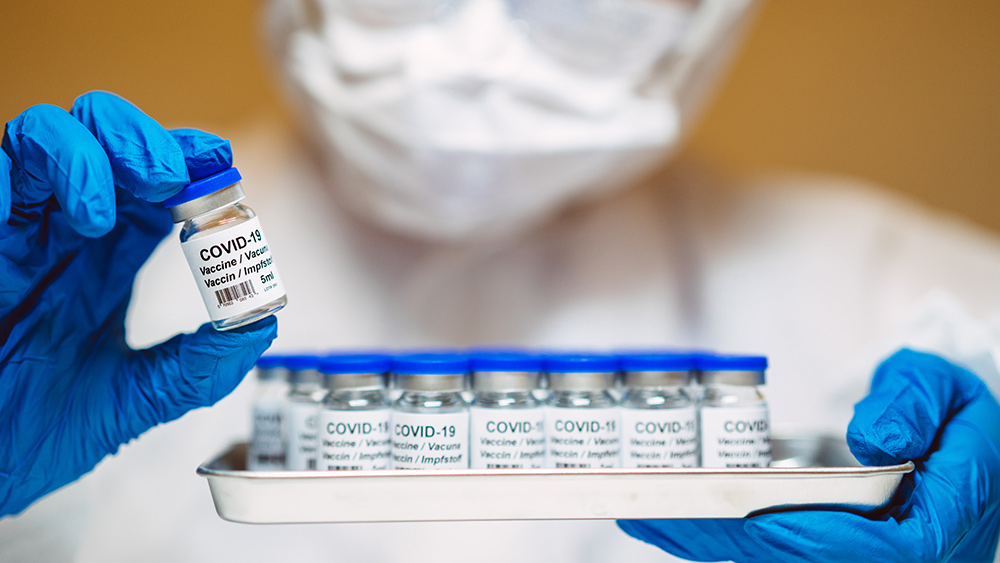A generation at risk: Groundbreaking study exposes the toxic truth in schoolchildren’s vapes
11/15/2025 / By Ava Grace

- Testing of confiscated school vapes revealed not only mislabeled nicotine and unregulated cannabis but also biological hazards, including bacteria and fecal matter, at levels that could cause respiratory illness.
- A vast majority (83 percent) of the devices contained highly addictive nicotine, while 14 percent contained cannabinoids. Of the cannabis vapes, 73 percent were a dangerous, unpredictable mix of natural and synthetic compounds.
- The study found a complete lack of manufacturing standards, with widespread mislabeling of nicotine strength. Critically, over 99.9 percent of the products were not authorized for legal sale by the FDA, confirming an illicit supply chain.
- The research provides physical evidence of a school-based vaping epidemic, with popular brands like Geek Bar being easily acquired by students through friends, personal purchase or theft.
- The report concludes that the combination of products targeted at youth, a lack of regulatory oversight and the confirmed presence of harmful substances represents a systemic failure, requiring urgent action from parents and policymakers to prevent a public health tragedy.
In a stark revelation that confirms the worst fears of parents and educators, a forensic investigation has laid bare the hidden dangers of the vaping devices circulating through the nation’s schools. Recent testing by a Virginia Commonwealth University (VCU) toxicology lab has uncovered a disturbing cocktail of mislabeled nicotine, unregulated cannabis and even fecal matter in devices used by more than a million school-age children.
This past school year, researcher Michelle Peace and her team at the Laboratory for Forensic Toxicology Research conducted an extensive forensic analysis, collecting and evaluating nearly 1,300 vaping products from K-12 schools across Virginia, exposing an unregulated market preying on American youth.
A chemical minefield in the classroom
The findings from this real-world survey of confiscated school property are a damning indictment of the vaping epidemic. The data reveals a marketplace of deception and danger. A staggering 83 percent of the products contained nicotine, the highly addictive substance that hooks young brains, while 14 percent contained cannabinoids, the psychoactive compounds found in cannabis. Perhaps most alarming is the discovery that 73 percent of the cannabis vapes tested contained a potent and unpredictable mixture of both plant-based and synthetic cannabinoids, with concentrations varying wildly from 28 to 90 percent, creating a Russian roulette of psychological and physiological effects for the user.
The concept of consumer choice is rendered meaningless in this shadow market. The research demonstrates widespread mislabeling, shattering any illusion of informed consent. Devices often advertised as containing a standard five percent nicotine level were found to contain anywhere from a mere one percent to a potent four percent, demonstrating a complete lack of manufacturing standards. Even more concerning was the identification of ethanol—a form of alcohol—in four percent of the nicotine vapes. Critically, less than 0.1 percent of the products submitted had authorization for legal sale from the Food and Drug Administration, proving they flow almost exclusively from an unregulated, and often illicit, supply chain.
Beyond nicotine: A biological hazard
The dangers extend far beyond addictive substances and inaccurate labels. The VCU team uncovered a biological hazard that would alarm any parent. Their testing confirmed the presence of microbiological contaminants, including bacteria, yeast and coliform in the devices and their aerosol. Coliform bacteria specifically indicate the presence of fecal contamination. Researchers noted that the levels of these contaminants in many products exceeded the exposure threshold, the point at which negative health effects are likely to occur, raising profound concerns about respiratory infections and other illnesses linked to inhaling such pathogens.
This public health crisis is being managed in a data vacuum. While national surveys like the Monitoring the Future report suggest significant usage, Peace and her team express concern that such data may not fully capture the scale of the problem, as school personnel consistently report a rising tide of vaping among students. The VCU study provides a tangible, physical record of the crisis, with the Geek Bar brand dominating the collections, followed by Raz and Lost Mary. The pathways of access are equally troubling, with students reporting they acquire these devices most commonly through friends or peers, by purchasing them themselves, or even by theft.
Learning from the past to protect the future
There is a grim historical parallel to this unfolding tragedy. For decades, the public health battle against traditional cigarettes was hampered by a lack of comprehensive data and aggressive marketing from tobacco companies. It took years of conclusive research and countless lives lost to establish the definitive links between smoking, lung cancer and heart disease, ultimately leading to the public health policies that curbed its use. The nation now stands at a similar crossroads with vaping. The VCU research serves as a crucial, early warning siren, providing the hard evidence that was so desperately needed and for so long absent in the fight against Big Tobacco.
“Vaping is the act of inhaling aerosolized solutions. This is similar to inhaling steam from hot water with VapoRub to clear sinuses,” BrightU.AI‘s Enoch noted. “It is also compared to breathing in the humid or polluted air of a city.”
The conclusion drawn from this forensic evidence is inescapable. The vaping phenomenon represents a systemic failure to protect the most vulnerable. The combination of deliberate targeting of youth with sweet flavors, the complete absence of regulatory oversight, and the now-confirmed presence of harmful and deceptive substances creates a perfect storm threatening a generation. The mission of researchers like Michelle Peace is to arm society with the facts. It now falls upon parents, educators, and policymakers to heed this warning, reject the narrative of vaping as a harmless alternative, and take decisive action to remove these toxic products from the hands of children before the long-term consequences become an irreversible national tragedy.
Watch as a mother talks about the dangers of vaping.
This video is from the PureTrauma357 channel on Brighteon.com.
Sources include:
Submit a correction >>
Tagged Under:
biological hazards, children's health, Dangerous, e-cigarette, education system, health, manufacturing standards, mislabelling, nicotine, prevention, research, sudy, unregulated cannabis, vape, vaping
This article may contain statements that reflect the opinion of the author





















